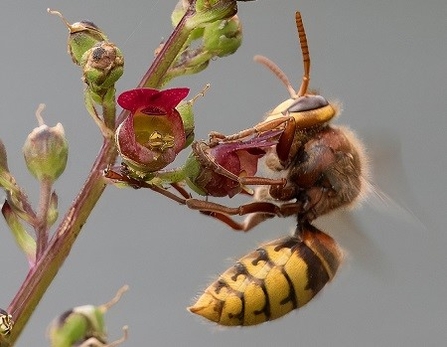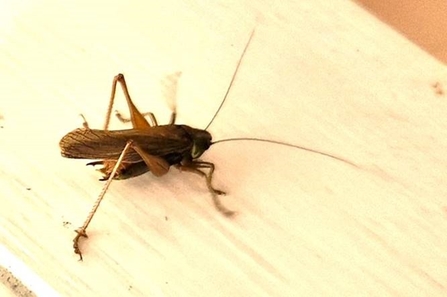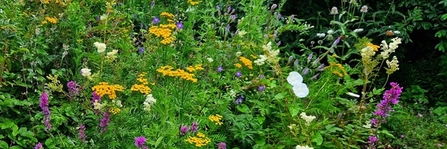Water figwort and its pollinators
Water figwort occurs by water bodies in many places in the county. Every summer I am intrigued to see wasps avidly feeding from the tiny, fig-coloured flowers.
Not so this summer. The flowers on several plants growing by a local lake and by our garden pond remained unvisited until yesterday, when a single wasp briefly appeared on one in the garden.
Local photographer Chris Jackson however did see a hymenopteran on figwort at the lake. Unusually it was a Eurasian hornet rather than a wasp as you can see.
Hornets are essentially predators of other insects but clearly also find these flowers irresistible
Wild Update - August 2024

Hornet feeding on a water figwort - Chris Jackson
Roesel’s all over the place
The insect of the moment is undoubtedly Roesel’s bush cricket, a species which appears to be doing extremely well this summer as it rapidly colonises the UK from the south.
Dave Evans counted at least 40 in a field close to Wyver Lane Reserve at Belper the other day and Kieron Huston reported seeing many when he was surveying Ashbourne Airfield, a brownfield site soon to be further developed for housing.
While having lunch at a table in the garden on Tuesday, a big insect suddenly landed on the French windows. I managed a quick ‘record shot’ before it zoomed off up the garden towards our small wildflower meadow is from where it may have come from.

Macropterous male Roesel’s bush cricket on a window frame. NB
Not until I looked at the photo did I realise it was a Roesel’s, unmistakable with those long antennae (grasshoppers have very short ones) and that pale U shape on the pronotum (the plate that covers the thorax) which is just about visible.
What’s more, the long wings showed it to be the rare macropterous form which apparently becomes more common in hot summers when numbers are high, enabling some to disperse far and wide.
So if you are walking through long grass keep your eyes and your ears open. Males stridulate (sing) by rubbing their wings together but they do so low down in the vegetation.
If you do see or photograph one be sure to send a record to the DBRC!
A slight improvement
As everyone is saying, butterfly numbers are very low this summer due to the poor spring and early summer weather.
We have four buddleias in the garden and some are already going over. Two peacocks, a large white, a red admiral and a couple of bumble bees have been the only insects seen visiting them during the last two weeks.
And yesterday in local oak woodland where purple hairstreaks can usually be found at this time of year, nothing moved despite prolonged searching of the oaks with binoculars. The purple in the name of this species is on the upper wings.

Philip Precey
A riot of colour
High summer and the garden is certainly colourful even if there are so few insects to take advantage of the nectar and pollen on offer.

Pondside plants include tansy, purple loosestrife, meadowsweet (and bindweed!)……NB

‘Brownfield’ plants including golden rod, wormwood, hemp agrimony, knapweed and teasel. NB
